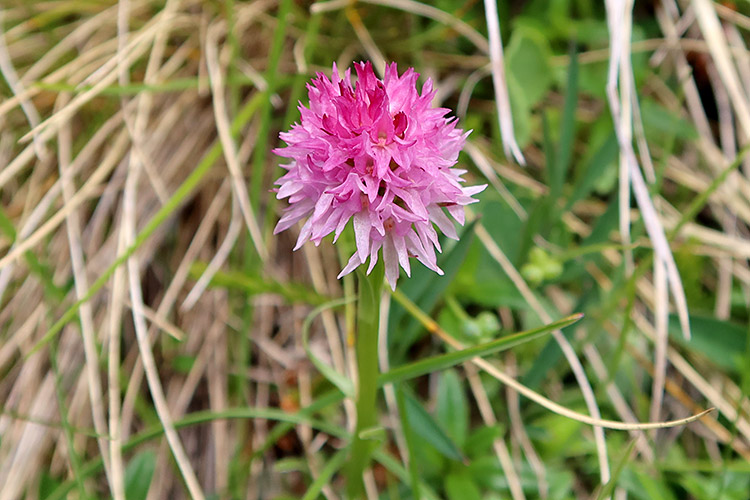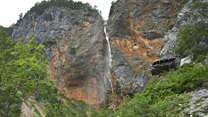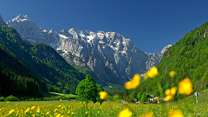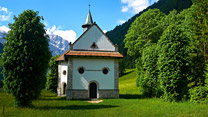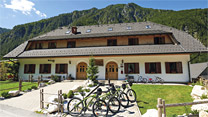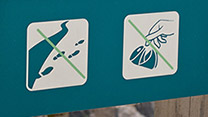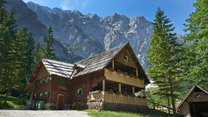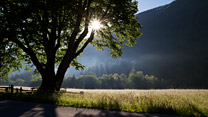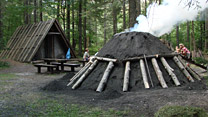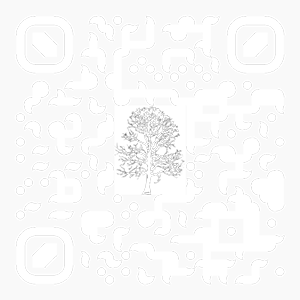Alpine flowers
CYPRIPEDIUM CALCEOLUS
Also known as: Lady-slipper’s orchid
Cypripedium is the largest European orchid in terms of the size of its flower. It usually thrives in mountain beech forests and its flowers cannot be confused with any other species, while its leaves could be confused with those of hellebore.
Cypripedium is a rare and vulnerable species, which due to its beauty is also endangered by humans through digging it up and removing its seeds, and the plant population is also harmed by excessive nitrogen entering the environment, as well as afforestation and changes in forest management.
As a vulnerable species, the Cypripedium calceolous is included in the red list of endangered plants and is thus protected.
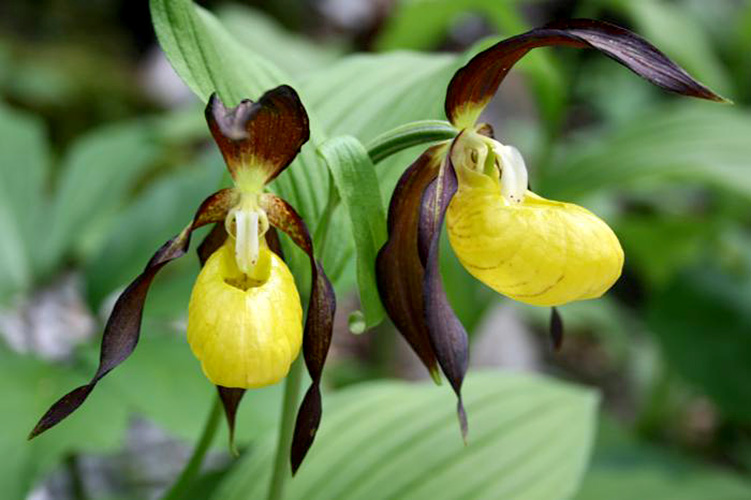
CARNIOLAN LILY
(Lilium carniolicum)
Also known as: Golden apple
The Carniolan lily has orange or dark yellow petals that are turned outwards, which is one of the features that makes it distinguishable from other types of lilies.
The plant is endangered, partly due to its beauty and, as a consequence, tendency to be picked, and partly due to grassy areas being overgrown.
The Carniolan lily is included in the Slovenian red list of endangered species and is protected in Slovenia, so it must not be picked or damaged.
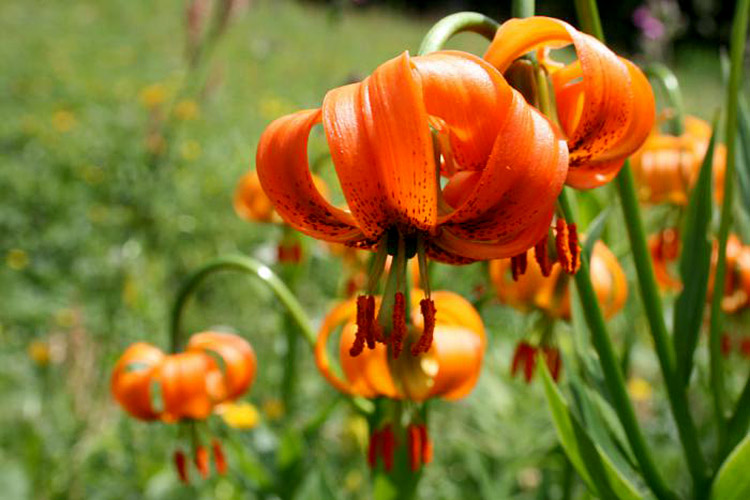
AURICULA
(Primula auricula)
Also known as: Mountain cowslip, Bear’s ear
The flower of the auricula is similar to that of the primrose, as both plants belong to the primulaceae species.
Auricula’s bright yellow flowers differentitate it from most other primroses, which most often have reddish or pink flowers. All other primroses with yellow flowers also have wrinkled leaves.
The auricula is a protected species in Slovenia.
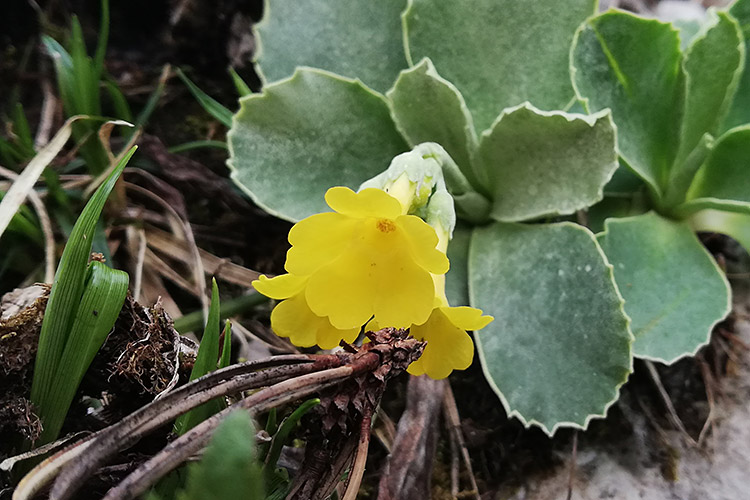
ZOIS’S BELLFLOWER
(Campanula zoysii)
The Zois's bellflower is only found in Slovenia. It most often grows in rock crevices.
It differs from other bellflowers in that the mouth of the flowers of the Zois’s bellflower is so narrow that insects cannot get through it. As insects have to make a hole in the flower basket to be able to pollinate, the flowers of adult plants are almost always broken off.
The Zois's bellflower is listed on the Slovenian red list of engandered species, not because it is endangered but because it is classified as one of the very old, tertiary plants and is endemic to the Slovenian Alps.

GENTIANA
Of the more than 400 species of gentiana, quite a few grow in the Logar valley. The species is best known for its large, primrose-like flowers, which are mostly blue.
As many species of gentiana have beneficial effects and are endangered due to being picked, many of them are protected or picking them is regulated.
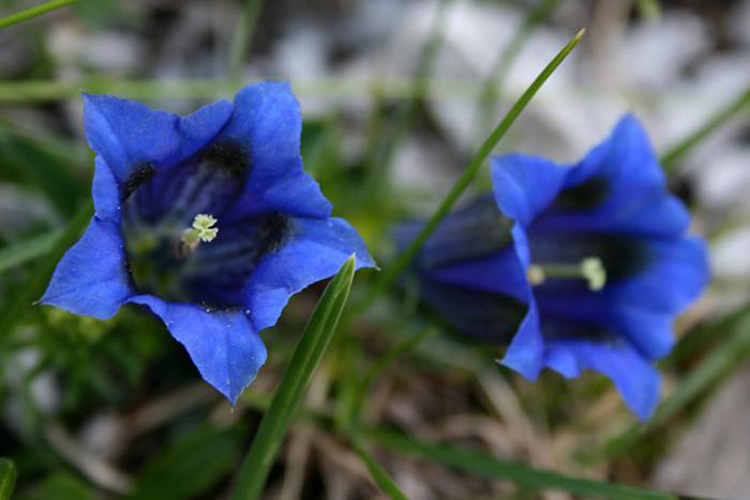
EDELWEISS
(Leontopodium alpinum)
On the alpine lawns and in rock crevices, the Logar valley, with its 2,000 metre-high peaks, is a favourable habitat for one of the most famous alpine flowers.
What is interesting about edelweiss is the fact that what we think flowers are actually leaves. The flower is merely the yellow part in the middle and is in fact an inflorescence. The whole plant is covered with whitish hairs, which protect it from heat loss and excessive evaporation, as it grows in extremely dry and windy habitats.
Edelweiss was the first plant to be protected in Slovenia.
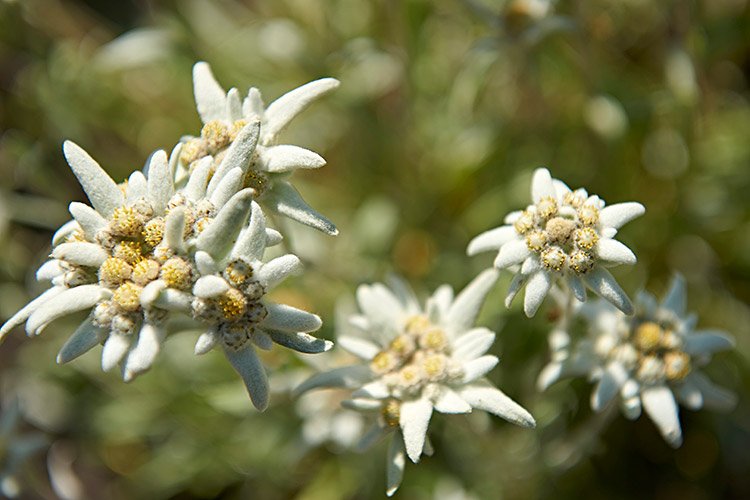
KAMNIK ORCHID
(Nigritella lithopolitanica)
This Slovenian orchid is one among Slovenia’s endemic species, as it only grows high in the Kamnik-Savinja Alps and the Karavanke. It was not identified as an independent species until 1978.
The Kamnik orchid is included in the red list of endangered species and is thus protected.
